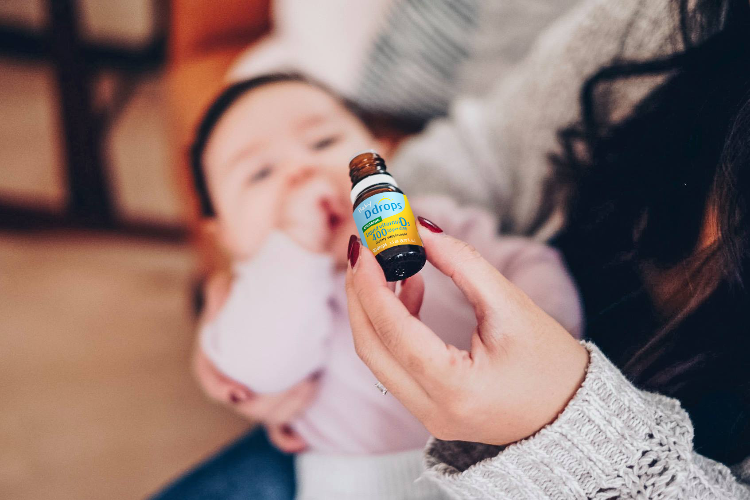18 Julai 2017
Memberi kanak-kanak dos vitamin D yang tinggi tidak akan mengurangkan bilangan selsema musim sejuk - sekurang-kurangnya tidak melebihi dos yang disyorkan, satu kajian baru telah ditemui. Penemuan yang diterbitkan dalam JAMA, mendapati secara purata, kanak-kanak yang menerima dos standard Ddrops® 400 IU setiap hari mempunyai 1.91 selsema setiap musim sejuk, manakala kanak-kanak yang menerima dos tinggi Ddrops® 2000 IU setiap hari mempunyai 1.97 selsema. Penyelidik berkata keputusan ini tidak mempunyai perbezaan statistik.
"Kami mungkin baru saja menumpaskan mitos," kata Dr Jonathon Maguire di Hospital St Michael di Toronto. "Lebih banyak tidak selalu lebih baik."
Berikut adalah beberapa perkara menarik yang ditunjukkan dalam kajian ini:
- 44 hingga 47 peratus daripada 703 kanak-kanak dalam kajian ini tidak melaporkan sebarang jangkitan saluran pernafasan atas semasa musim sejuk dan selesema.
- Percubaan ini mempunyai kadar penyiapan 99.4%.
- Ddrops® dipilih secara khusus oleh penyelidik ini kerana formulasi berasaskan titisan, untuk "memudahkan pentadbiran ubat kajian."
- Ddrops® berjaya meningkatkan paras darah dalam kedua-dua kumpulan, dan paras darah berada dalam julat yang sihat semasa musim sejuk. Pada akhir kajian, tahap vitamin D adalah 48.7 ng/mL dalam kumpulan dos tinggi dan 36.8 ng/mL dalam kumpulan dos standard.
- Tiada kejadian buruk yang dilaporkan dalam percubaan ini.
- Influenza dikurangkan sebanyak 50% dalam kumpulan vitamin D dos tinggi. Walau bagaimanapun, terdapat sedikit jangkitan influenza dalam kedua-dua kumpulan ini, jadi para penyelidik tidak menganggap ini penting secara klinikal.
- Ada kemungkinan bahawa mengekalkan tahap optimum vitamin D dengan suplemen boleh mengurangkan selesema dan selesema jika dibandingkan dengan tidak mengambil vitamin D sama sekali semasa musim sejuk. Kajian ini tidak boleh membuat kesimpulan ini, kerana tiada kumpulan plasebo dalam kajian ini. American Academy of Pediatrics mencadangkan dos vitamin D harian untuk semua kanak-kanak, jadi mempunyai kumpulan kajian yang tidak mengikuti nasihat ini adalah dilarang oleh etika penyelidikan.
- Ada kemungkinan bahawa 400 IU sehari mungkin mencukupi untuk kesan perlindungan terhadap jangkitan, tetapi tanpa bukti konkrit, cadangan vitamin D terus menyokong kesihatan tulang dan gigi.
Kajian yang dijalankan oleh TARGet Kids! dan diketuai oleh Dr Jonathon Maguire di Hospital St Michael di Toronto melibatkan 703 kanak-kanak yang sihat. Separuh daripada kanak-kanak diberikan dos standard Kids Ddrops® 400 IU (dos yang disyorkan AAP pada permulaan kajian), dan separuh lagi diberikan dos Ddrops® 2000 IU yang lebih tinggi (masih di bawah had atas untuk kanak-kanak). Botol Ddrops® dilabelkan sama. Setiap ibu bapa telah diarahkan untuk mula memberikan Ddrops® antara September dan November tahun permulaan dan meneruskan sehingga April atau Mei tahun berikutnya. Ibu bapa mengambil sampel dan menyerahkan sapuan hidung daripada anak-anak mereka setiap kali anak mereka mendapat jangkitan saluran pernafasan atas (URTI) semasa musim sejuk.
Walaupun sukar untuk mendapatkan terlalu banyak perkara yang baik, kadangkala, kurang adalah lebih. Adalah lebih baik untuk bercakap dengan pengamal penjagaan kesihatan anda tentang keperluan khusus anak anda mengenai suplemen vitamin D.
Terima kasih TARGet Kids! kerana memilih Ddrops® untuk kajian ini!





Tinggalkan komentar
Situs ini dilindungi oleh hCaptcha dan berlaku Kebijakan Privasi serta Ketentuan Layanan hCaptcha.